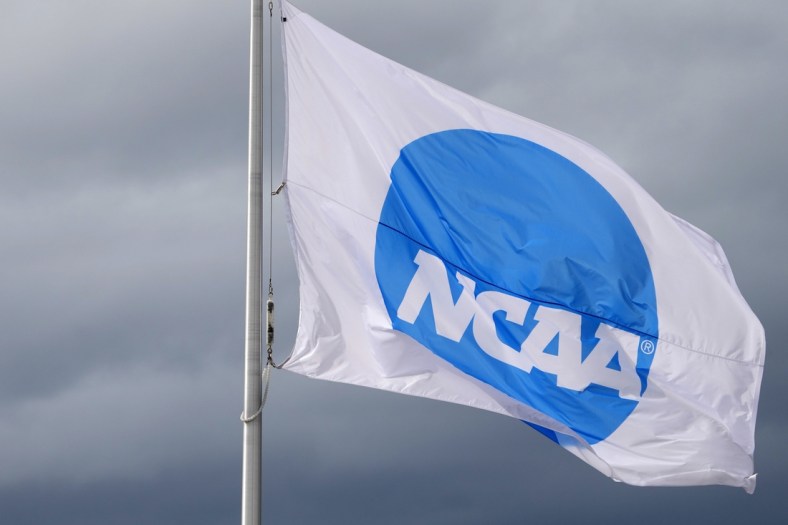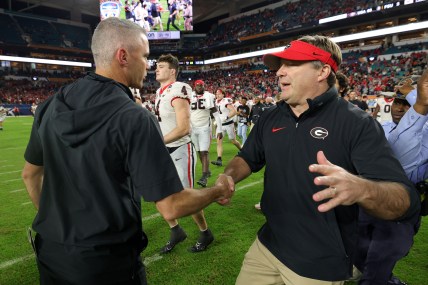
The United States Supreme Court ruled against the NCAA on Monday, siding with student-athletes over rules limiting compensation and opening the door for athletes to receive compensation in the future.
Former student-athletes presented their case to the Supreme Court, arguing that NCAA rules limiting specific compensation for athletes were too restrictive.
Under existing NCAA rules, student-athletes can’t be paid and any scholarships awarded cannot surpass the value of the costs to attend the university. It was done in the name of maintaining amateurism at the collegiate level, preventing athletes from unionizing or receiving additional compensation for their contributions.
Related: Mark Emmert to schools: Resolve the NIL mess or the NCAA will
The Supreme Court’s unanimous ruling invalidates a portion of the “amateurism” rules, resulting in the NCAA no longer being able to prevent athletes from receiving education-related benefits.
While the ruling doesn’t determine whether student-athletes are permitted to receive paid salaries, it is a step toward them receiving compensation. Under the new ruling, universities can provide students with thousands of dollars in computers, graduate scholarships, internships and other education-related tools.
Supreme Court Justice Brett Kavanaugh directly called out the NCAA for creating a system that generated billions of dollars off the backs of athletes and failing to fairly compensate them.
“To be sure, the NCAA and its member colleges maintain important traditions that have become part of the fabric of America—game days in Tuscaloosa and South Bend; the packed gyms in Storrs and Durham; the women’s and men’s lacrosse championships on Memorial Day weekend; track and field meets in Eugene; the spring softball and baseball World Series in Oklahoma City and Omaha; the list goes on. But those traditions alone cannot justify the NCAA’s decision to build a massive money-raising enterprise on the backs of student-athletes who are not fairly compensated. Nowhere else in America can businesses get away with agreeing not to pay their workers a fair market rate on the theory that their product is defined by not paying their workers a fair market rate. And under ordinary principles of antitrust law, it is not evident why college sports should be any different. The NCAA is not above the law.”
United States Supreme Court Justice Brett Kavanaugh
Before the COVID-19 pandemic in 2020, which wiped out March Madness and greatly impacted the college football season, college athletics generated $18.9 billion in revenue in 2019.
This is a landmark ruling that will have a huge fallout on the future of collegiate sports.
Related: Why college athletes can’t make money (and why that’s soon to change)
Impact of Supreme Court ruling on NCAA student-athletes
The Supreme Court has now opened the door to addressing issues within the language of the NCAA rules, which violate federal antitrust laws. While this ruling only addresses providing student-athletes with education-related payments, it is another step toward a changing landscape across the country.
Six states will have NIL laws go into effect in July. The name, image and likeness legislation allows student-athletes to receive payment for any use of their brand. With more states pushing similar legislation forward and greater momentum behind it nationally, NCAA President Mark Emmert encouraged all schools to create temporary rules allowing their athletes to receive compensation.
Alabama, Arizona, Connecticut, Florida, Illinois and Iowa will all have NIL laws effective in a matter of weeks. By 2022, 19 states are set to have laws go into effect and the number is rapidly growing, with efforts to move the effective dates into 2021.
The Supreme Court’s ruling is a pivotal step towards student-athletes receiving more compensation for their contributions and it will accelerate further efforts across the United States.
In the weeks and months to come, universities may begin to announce policies that will create opportunities for their athletes to earn income. Much like with everything else in college sports, it could be used as an edge to land recruits.

